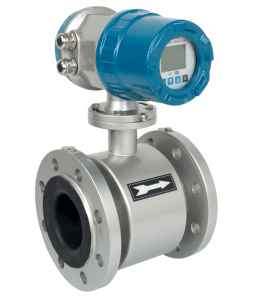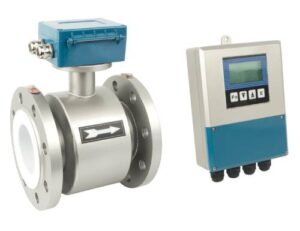Several factors influence the magnetic flow meter’s maximum velocity. The diameter of the flowmeter is determined by the flow rate, not necessarily by the pipe diameter. In the process industry, the flow rate of liquids with low viscosity such as water is the economical rate of 1.5 to 3m/s.
In such pipelines, the sensor caliber is the same as the pipe diameter.
Ideally, for a full-scale flowmeter, the liquid velocity should be set between 1 to 10m/s. In principle, the upper flow rate has no ceiling, but it is usually recommended not to exceed 5m/s unless the lining material can withstand the erosion from liquid flow.
In practice, the magnetic flow meter’s maximum velocity rarely exceeds 7m/s. The lower limit of the flow velocity of the full-scale flow is generally 1m/s, and in some models, it is 0.5m/s.
In some projects, the flow velocity is relatively low in the early stage of operation.
For greater accuracy, the diameter of the instrument should be smaller than the pipe diameter and connected with a reducer.
For fluids with substances that are prone to adhere, deposit, or scale the flow rate should not be less than 2m/s, preferably 3~4m/s or more, to facilitate self-cleaning and deposition and adhesion prevention.
One example of fluids with strong abrasiveness is the mineral slurry.
Moreover, the usual flow rate should be lower than 2 to 3m/s to reduce the lining and electrode wear. When measuring low-conductivity liquids close to the threshold, a flow rate of less than 0.5 to 1m/s should be used.
As the flow rate increases so the flow noise, adding output sloshing.
Finally, the range of electromagnetic flowmeter is quite large, usually not less than 20, and for meters with an automatic range switching function, it can exceed 50-100.


